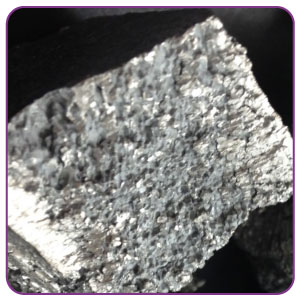Dysprosium

| Symbol | Dy |
| Atomic Number | 66 |
| Atomic Mass | 162.50 u |
| Discovered by | Dysprosium was discovered by Paul-Émile Lecoq de Boisbaudran |

Table of Contents
Chemical Properties of Dysprosium
| Group | Lanthanides | Melting point | 1412°C, 2574°F, 1685 K |
| Period | 6 | Boiling point | 2567°C, 4653°F, 2840 K |
| Block | f | Density (g cm−3) | 8.55 |
| Atomic number | 66 | Relative atomic mass | 162.50 u |
| State at 20°C | Solid | Key isotopes | 164Dy |
| Electron configuration | [Xe] 4f10 6s2 | CAS number | 7429-91-6 |
| ChemSpider ID | 22355 | ChemSpider is a free chemical structure database | |
What is Dysprosium?
- Dysprosium is the 66th element in the periodic table.
- The metal was discovered by a French chemist named Paul-Émile Lecoq de Boisbaudran in the year 1886.
- This element with the symbol Dy is abundantly found in nature and even found in many minerals such as gadolinite, xenotime, euxenite, fergusonite, blomstrandine and polycrase, which can also be called sources of Dysprosium.
Properties of Dysprosium
- It appears as a silvery, lustrous and soft metal.
- The element possesses excellent stability at room temperature and usually gets oxidized in the presence of oxygen.
- At a low temperature below 85K, this metal exhibits high magnetic strengths and they tend to dissolve in concentrated acid solutions.
- This metal has about 29 isotopes of their mass numbers between 141 to 169. The number of naturally occurring isotopes for dysprosium is about seven in number and all are known to be stable isotopes.
- The earth’s crust is composed of about 5.2 mg/kg and the concentration of Dy in seawater is about 0.9 mg/L. The worldwide production of Dysprosium (Dy) is around 100 tonnes and about 99 % of this is being produced artificially in China.
Uses of Dysprosium
- Dysprosium is used in controlling rods in reactors of the nuclear power plants as they have the capability to absorb neutrons.
- Being a radioactive element, the metal finds useful applications in the field of radioactivity.
- Since the magnetic susceptibility is high, it is used in the applications of the data storage system.
- The metal bromide and iodide are used for high-intensity lamps.
- The salts of dysprosium such as aluminum garnet, iron garnet are employed in the adiabatic refrigerators.

Comments